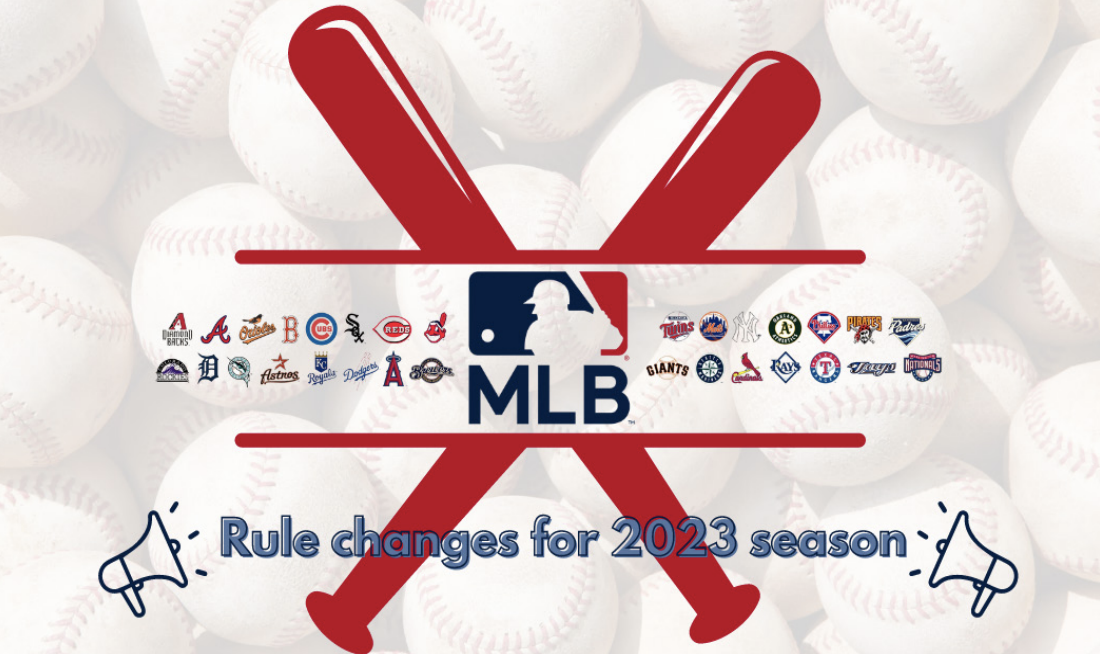MLB announces 2023 rule changes
On Sept. 9, Rob Manfred, the commissioner of Major League Baseball (MLB) announced the Joint Competition Committee’s decision to implement three new rule changes into the game for the 2023 season.
The committee, composed of six members appointed by the MLB, four active players and one umpire, voted to introduce a pitch clock, defensive shift restrictions and larger bases to the game next season.
The most notable change, the pitch clock rule, states that the pitcher will have 15 seconds to throw a pitch when the bases are empty and 20 seconds when there are runners on base. The batter will have to be in the batter’s box by the time there are eight seconds left on the pitch clock. If the pitcher is not in motion to throw a pitch by the time the clock expires, it will result in a ball for the batter. Likewise, the hitter will receive a strike if they are not in the batter’s box and alert by the time the clock reaches eight seconds remaining. The pitcher will receive two disengagements, which allows pick-off attempts and step- offs, resetting the clock. This number will reset for the pitcher per plate appearance. This rule change was voted against by the four players on the committee. However, the MLB states that this change will help with the pacing of the game, an issue and complaint that has been raised by fans for many years.
The second change places restrictions on defensive shifts. The rule states that all infielders must be within the outer boundary of the infield when the pitcher is in motion to throw a pitch. It also prevents
infielders from switching sides according to who is at the plate. The third section of this rule states that two infielders must be positioned on either side of second base at the time of a pitcher’s release. If a defensive position is ruled illegal, the offensive team can choose to allow the play to stand, or to take a ball instead. This rule change prevents the four-outfielder alignments that have gained popularity recently within the game and increases the athleticism demonstrated by players. It also is expected to increase the number of balls hit in to play during games. Similar to the pitch clock, this rule change was also voted against by the players.
The final rule change being put into effect next season is larger bases. The bases, with the exception of home plate, will increase from 15 inches square to 18 inches square, reducing the space between these bases by four and a half inches. This change was made with the hopes to increase player safety by decreasing collisions. It likely will also cause an increase in stolen base attempts.
Although these changes have caused mixed reviews in fans, the MLB is hoping that these changes will increase the pace, safety, entertainment market of the game, and contribute to the evolution of baseball without taking away its long-standing history and tradition.







































